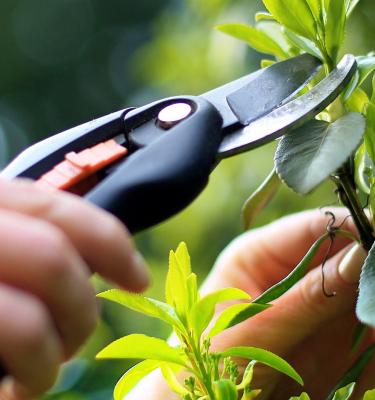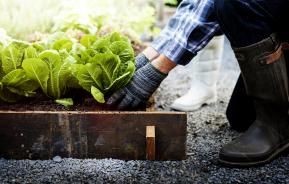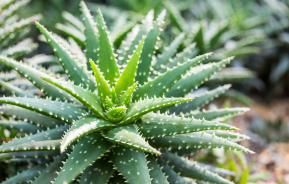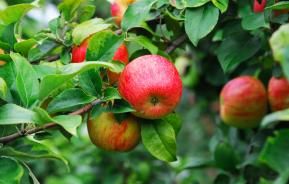Taking cuttings from a plant is easy to do once you know how. It costs very little and you don’t need complicated equipment, just a little bit of patience. This guide from David covers two of the most common methods of taking cuttings: softwood and hardwood cuttings. As the names suggest, softwood cuttings are taken from soft & pliable young shoots early in the year, whereas hardwood cuttings are taken from riper, woody shoots at the end of each growing season.

How and when to take plant cuttings
Taking plant cuttings is easy to do once you know how
Why do we take cuttings from plants? Not only will taking cuttings allows you to produce several new plants from an existing one, which is great if you’re on a budget, they are also a good way of propagating tender plants like Pelargoniums and Fuchsias that might not survive a harsh winter.
When to take cuttings
The best time to take softwood cuttings is from mid-spring to early summer. Hardwood cuttings are taken later in the year, from mid-autumn to mid-winter.
How to take softwood cuttings
- Before you take a plant cutting, fill your pots with compost and water them so that they are ready for the cuttings.
- Take cuttings early in the day when the plant’s stems are full of water. Place cuttings in a plastic bag to stop them drying out and use them as soon as possible.
- When taking a cutting, choose a strong side shoot with no flowers and cut a piece between 5-10cm (2-4in) long, cutting just below a leaf joint.
- Remove all leaves from the lower half of the cutting and pinch off the growing tip.
- Dip the bottom end of the cutting in hormone rooting powder if you have some. This helps the cutting to produce roots and reduces the risk of bacterial infection.
- Using the dibber or a pencil make a hole in the centre of the compost and insert the cutting so that the lowest pair of leaves is just above the soil surface. Firm the compost around the cutting.
- Once all cuttings have been potted up, label them and either place in a propagator with a bottom heat of 18-24ºC (64-75ºF) or cover each pot with a clear plastic bag and place somewhere with bright but indirect light. Open the propagator vents daily or remove the plastic bags for 10 minutes twice a week for ventilation.
- Water regularly to keep the compost moist but not wet. The cuttings can take between six and 10 weeks to root and depends on the plant. Check for signs of the roots appearing through the pot’s drainage holes.
- Once the cuttings have rooted, harden them off for two weeks by placing the pots outside during the day and bringing them in at night.
- When the cuttings have been hardened off, replant them into larger pots and grow them on until they are big enough to plant out.

How to take hardwood cuttings
- Take hardwood cuttings in autumn after the plants have dropped their leaves and are dormant, but don’t take cuttings in frosty weather.
- If you are planning to take several cuttings, prepare a narrow trench for them outside in a sheltered spot. The cuttings will stay in this trench for most of the following year. To ensure good drainage, put a layer of grit in the base of the trench, then backfill the trench with soil mixed with compost. If you only need a few cuttings, or don’t have space for a trench, you can use pots filled with a 50/50 mix of multipurpose compost and grit.
- To take a plant cutting choose a strong, pencil-thick woody shoot that has grown in the current year and cut it off close to the base of the shoot.
- Remove the tip of the shoot and cut it into lengths 15-30 cm (6-12in) long. Cut just above a bud at the top of each length, using a sloping cut. This sheds rainfall from the cutting and is also a useful reminder of which end of the cutting is which.
- Cut just below a bud at the bottom of each cutting, using a straight cut.
- Insert the lower ends of the cuttings into the trench or pots so that one-third of each cutting remains above the soil surface. Space cuttings 15cm (6in) apart in trenches.
- Leave the cuttings in the trench or pots until the following autumn. Water in dry periods so that the compost doesn’t dry out.
- Once the cuttings have rooted, they can be replanted in their final positions.
What are the best plants to take cuttings from?
- Once you know how to take a cutting from a plant there are plenty of suitable plants to choose from.
- Softwood cuttings are ideal for many tender plants like pelargoniums, petunias, verbena, argyranthemums and osteospermums. You can also take softwood cuttings from many deciduous shrubs, including lavender, rosemary, forsythia, fuchsias, hydrangeas, lavatera and buddleia.
- Hardwood cuttings work well for most deciduous shrubs and roses as well as climbers like honeysuckle and grape vines, and fruit bushes such as blackcurrants, redcurrants, gooseberries and figs.
Taking plant cuttings is an easy, enjoyable and very economical way to increase the number of plants in your garden. Why not try it yourself?







